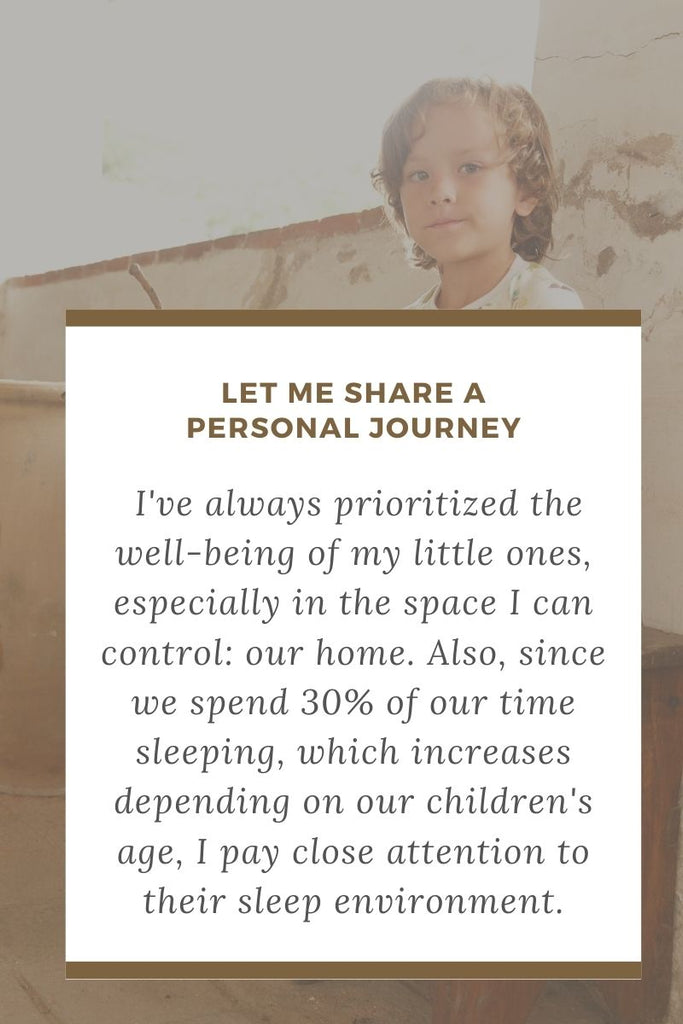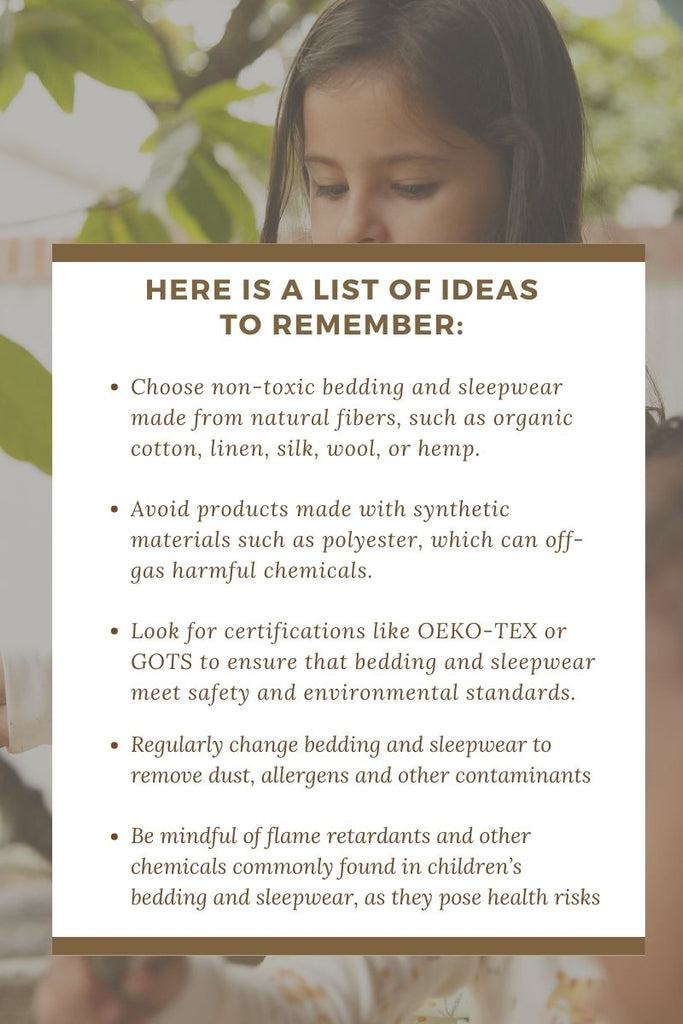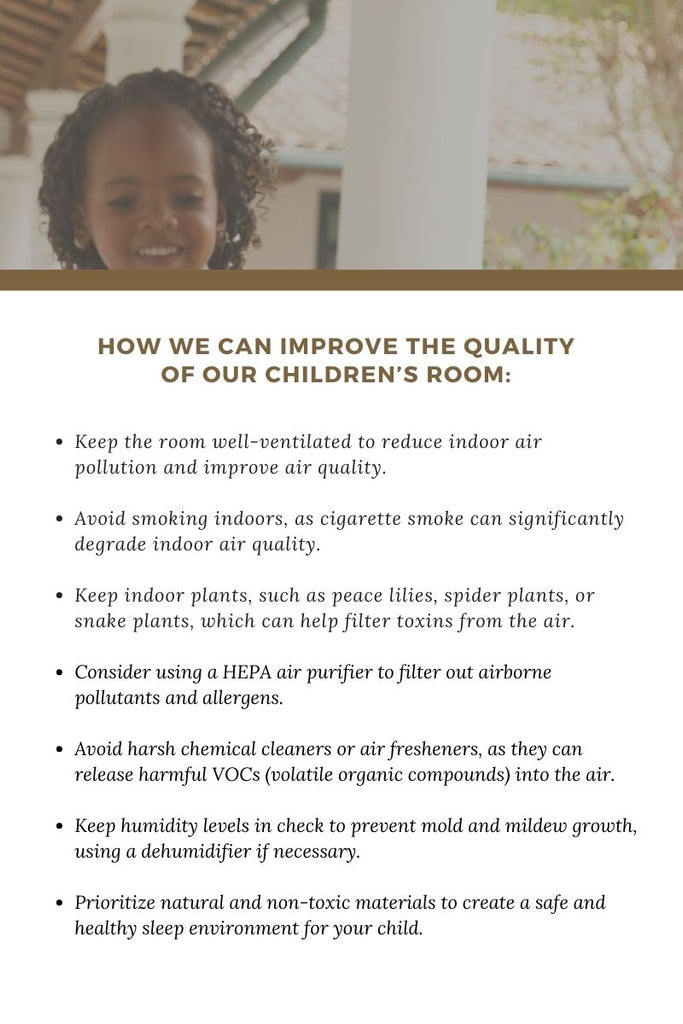Hey there, mommas, dadas, grannies, and loving people!
In this connection with you I want to talk a bit about a healthy and safe environment for our little ones. As parents, we always prioritize the well-being of our little ones, especially in the space we can control: our home. Also, since we spend 30% of our time sleeping, which increases depending on our children's age, we should pay close attention to their sleep environment. Let me share a personal journey that led me to advocate for non-toxic natural fibers and organic materials in children's bedding and sleepwear.

When my son was around a year old, we received a beautiful bed cover as a gift. It seemed soft and inviting, perfect for a cozy night's sleep. Because I trusted the person giving us the gift, I forgot to check the fabric content of the cover, which I always do with all our clothing. After using it, my son began experiencing heat rashes, leaving me puzzled and concerned. Do we have bugs? I wonder. I did a deep cleaning and checked for all possible bugs we could have. Nothing. But, despite all our sheets being made of organic cotton and my efforts to maintain a toxin-free environment, my little one rashes and itching persisted.
After careful investigation, I discovered that the bed cover was the culprit behind his skin issues. It was made of 100% polyester, the primary material in many textiles. Polyester is essentially melted plastic. Despite its widespread use and sometimes being marketed as a sustainable option when made from recycled plastic, it poses significant risks to our children's health.
We are now familiar with the dangers of flame retardants and polyester in children's sleepwear and bedding. These chemicals can off-gas harmful toxins, leading to respiratory issues, skin irritation, lower IQ, behavioral issues, and other health concerns in young children.
In a recent article by The New York Times, experts warn about the dangers of flame retardants commonly found in household products, including bedding and sleepwear. These chemicals have been linked to developmental delays, hormonal disruptions, and even cancer.
As parents, we must prioritize our children's health and well-being. Choosing natural fibers like cotton, linen, silk, wool, or hemp for bedding and sleepwear can significantly reduce their exposure to harmful chemicals. Organic pajamas, in particular, have been a game-changer for my family, providing my little ones with a safe and comfortable sleep environment.
Here is a list of ideas to remember:
- Choose non-toxic bedding and sleepwear made from natural fibers, such as organic cotton, linen, silk, wool, or hemp.
- Avoid products made with synthetic materials such as polyester, which can release gas harmful chemicals.
- Look for certifications like OEKO-TEX or GOTS to ensure that bedding and sleepwear meet safety and environmental standards.
- Regularly change bedding and sleepwear to remove dust, allergens, and other contaminants.
- Be mindful of flame retardants and other chemicals commonly found in children's bedding and sleepwear, as they pose health risks.

How we can improve the quality of our children’s room:
- Keep the room well-ventilated to reduce indoor air pollution and improve air quality.
- Avoid smoking indoors, as cigarette smoke can significantly degrade indoor air quality.
- Keep indoor plants, such as peace lilies, spider plants, or snake plants, which can help filter toxins from the air.
- Consider using a HEPA air purifier to filter out airborne pollutants and allergens. HEPA?
- Avoid harsh chemical cleaners or air fresheners, as they can release harmful VOCs (volatile organic compounds) into the air. VOC?
- Keep humidity levels in check to prevent mold and mildew growth, using a dehumidifier if necessary.
- Prioritize natural and non-toxic materials to create a safe and healthy sleep environment for your child.

Making informed choices about the materials we bring into our homes is key to promoting a healthier and more sustainable future for our children. Let's prioritize their well-being and create an environment that nurtures their growth and development.
Find more information at:
ENVIRONMENTAL WORKING GROUP: https://www.ewg.org/news-insights/news/2022/11/new-baby-textile-product-tests-show-concerning-levels-toxic-forever
Open Access Government: https://www.openaccessgovernment.org/article/toxic-textiles-potential-health-risks-associated-with-toxic-chemicals-in-clothing/171082/

